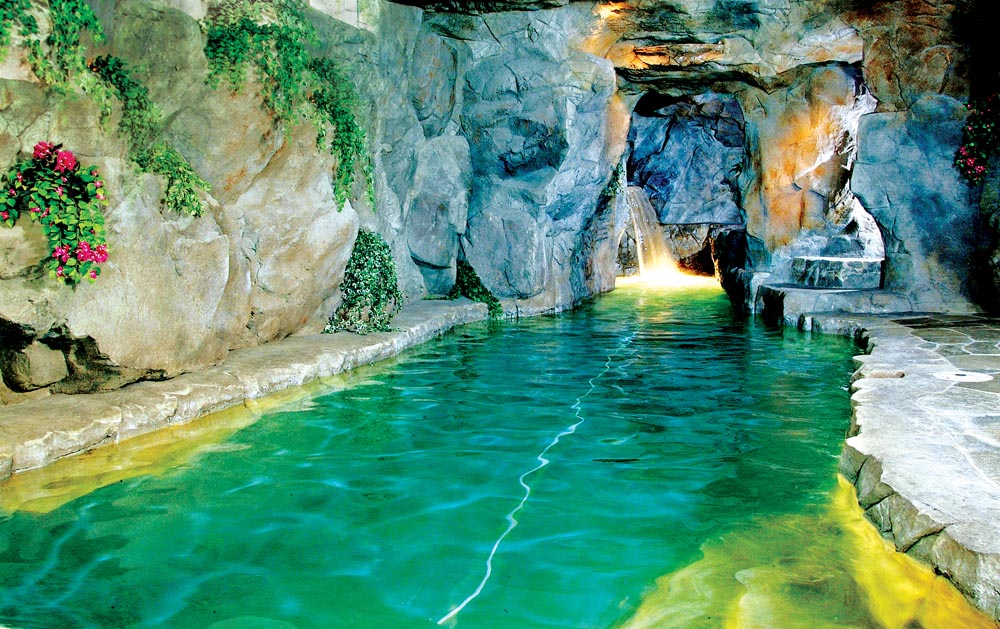Lake Tahoe is North America’s largest alpine lake, trailing only the Great Lakes in volume. Two-thirds of this huge lake is located in California, with the remaining one-third in Nevada. Lake Tahoe-Nevada State Park spans 14,301 acres and includes the coastline and wilderness on the northeast sides of Lake Tahoe on the Nevada side. This section of Lake Tahoe’s coastline and surroundings include fishing, boating, lovely beaches, wonderful walks, fishing, and cross country skiing in the winter. The environment varies from high alpine peaks like Snow Valley and Marlette Peak to meadowland and aspen groves, alpine and sub-alpine lakes, and flat sandy beaches.
:max_bytes(150000):strip_icc()/sand-harbor-state-park--lake-tahoe--nevada-453331363-1840f205e0584fb9867559c2f2179e12.jpg)
The Sierra Nevada climate is normal, with dry and sunny summers and plenty of snow in the winter. You should be mindful of its popularity before planning your visit here. Beaches can get rather crowded despite the 3 miles of shoreline because it’s a popular vacation for Las Vegas locals.
What to Do
The beaches of Lake Tahoe-Nevada State Park are popular, yet they are only a small part of what the park has to offer. Its backcountry is rugged and diverse, but it’s also a historical treasure (nearly literally!). There are numerous fishing options available.
Go to the Beach: Sand Harbour, possibly Lake Tahoe’s nicest beach, welcomes you with 2,500 feet of lovely, sandy beachfront lined with dozens of umbrellas. Picnic tables, a nature trail, a boat launch, and a visitor centre are all available at Sand Harbour. It contains an outdoor concert pavilion and hosts the Lake Tahoe Shakespeare Festival in July and August. Remember that this incredibly popular beach opens at 7 a.m. and that the parking lot closes when it fills up, so get there early. Although the lake waters are normally relatively chilly, this area of Lake Tahoe is popular with SCUBA divers, and Divers Cove is located near the Sand Harbour visitor centre. Sand Harbour Rentals offers kayaks and stand-up paddleboards, among other activities.
Hidden Beach is accessible by a network of short trails that lead to a sandy shoreline. Memorial Point is an elevated stretch of shore with stunning views of Lake Tahoe’s white granite rocks. Chimney shore (called for the chimney of a former settler’s cottage that still stands on the shore) lies five minutes south of Sand Harbour. The Chimney Beach Trail is a short walk from the road. If you want to avoid the throng, drive 2 miles south of Sand Harbour to Secret Cove, where the beach overlooks partially submerged pebbles in the lake.

Explore the Marlette-Hobart Backcountry: The Marlette-Hobart Backcountry includes around 13,000 acres of woodland with 50 miles of trails and dirt roads to explore. The Washoe tribe used this location during their seasonal movement between the Carson Valley and Lake Tahoe, and it was later the site of the historic Virginia Gold Hill Water System, which carried up to 10 million gallons of water per day to the adjacent Comstock gold and silver mines. The Marlette Lake Water System is currently a National Register of Historic Places and a Historic Civil Engineering Landmark.

All of the picturesque lakes and reservoir areas in this section of the park were constructed to serve the water system’s pipelines and flumes to Virginia City. Boating, fishing, and picnicking are all popular activities at Marlette Lake, Hobart Reservoir, and Spooner Lake. The Flume Trail, which offers views of Lake Tahoe and connects to the Tahoe Rim Trail, is one of the most popular backcountry paths. You’ll walk among lofty pines and possibly see local species such as mule deer, bears, coyotes, osprey, bald eagles, and woodpeckers.
Lake Tahoe-Nevada State Park has partnered with the non-profit group Nevada Nordic to establish a community-supported cross-country ski area in North Lake Tahoe. The groomed paths on the south side of Spooner Lake in Spooner Meadow and up North Canyon to Marlette Lake are free and sponsored by donations.

Drive It All: Nevada State Route 28 winds its way down the beach and through the state park, beginning at the Spooner Junction with US 50 (the Lincoln Highway) and heading northwest along the border before entering the park. The route extends for 16 miles, past Hidden Bach, Memorial Point, and Sand Harbour, until it reaches Incline Village. It’s a picturesque route that can get crowded in the summer, but it’s well worth the drive for the trails and secluded areas that connect to it.